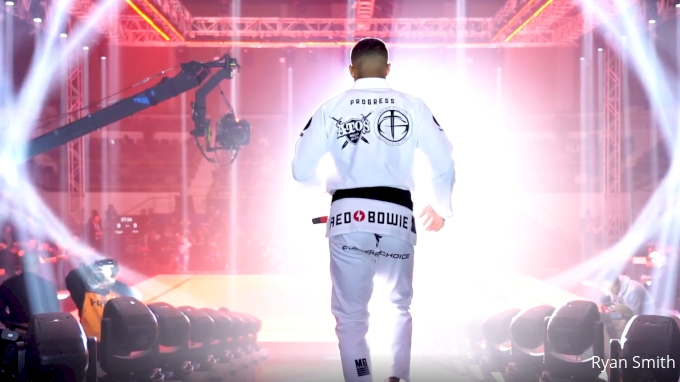How To Make Jiu-Jitsu A Mainstream Sport
How To Make Jiu-Jitsu A Mainstream Sport
Want jiu-jitsu to become a mainstream sport? Here are five suggestions on how we can improve the gentle art.

Unlock this article, live events, and more with a subscription!
Already a subscriber? Log In
Anyone who loves jiu-jitsu, wants it to become a mainstream sport. Although it has come a long way, we still have room to improve. Today we cover some major issues that need to be addressed before it's ready to level up.

1. Professional Branding
The Problem: Instead of investing in professional branding, the majority of academy owners decide to save money by doing it themselves.
If you google local gyms near you, 75% of them have amateur websites, logos, photography and promo videos. This DIY approach to branding makes jiu-jitsu look amateur to the general public. Investing in professional design work not only increases your chances to acquire a potential customer but it also helps propel the sport forward. Elite level academies such as Art Of Jiu-Jitsu, ATOS HQ, Alliance Sao Paul & Studio 540, are leading the charge in this category. Take inspiration from their example and apply it to your academy.
The Solution: Make the investment and hire a design professional.
2. Educating Our Athletes For Business

The Problem: Most athletes are broke and struggle to make a comfortable living.
Jiu-Jitsu athletes dream of getting paid the same figures as NFL, NBA or MLB players. However, few can effectively negotiate during a business meeting.
Jiu-Jitsu competitors are in desperate need of an education/mentorship program aimed at helping them conduct business with sponsors, promoters and inside their own academy. Especially, the rising stars in their early twenties. Very few are fortunate to have coaches who will mentor them and teach them what they are worth.
The Solution: An online course educating jiu-jitsu athletes to negotiate more effectively, understand how to build a business and improve their personal finance skills.
3. Improve Tournament Prestige & Presentation

The Problem: New events are being mismanaged and competitors are paying the price.
Few tournaments in jiu-jitsu have their act together. IBJJF, ADCC, Fight To Win and KASAI are all shining examples of what jiu-jitsu can be. However every year naive promoters enter the jiu-jitsu scene. They are eager to create the next ADCC and sign the top athletes.
They don't understand the business, they don't understand the numbers, and they don't know the risk. As a result, athletes end up unpaid and the promoter's reputation is tarnished. Being a tournament promoter is not for the faint of heart and you need to know what you're doing.
The Solution: Hire a seasoned event consultant, understand the investment and risks you are taking.

4. Meeting the Spectator Half Way
The Problem: The uneducated spectator struggles to watch and understand jiu-jitsu.
We all have tried to get our families, friends and spouses to watch a match with us. Eventually, their eyes glaze over and they start checking their phones. Why isn't jiu-jitsu as big as other major sports? Because it's challenging for non-practitioners to understand what's happening.
The majority of people who watch jiu-jitsu are people who train jiu-jitsu. This is the opposite in most major sports. For example, the MAJORITY of people who watch UFC fights, don't train MMA themselves. The same applies for the NFL, NBA, NHL, MLB etc.
I'm not saying jiu-jitsu is boring, but the way we display it might be. Let's change that! If we ever want to make jiu-jitsu a mainstream sport, we need to make the spectator priority number one. We need to start radically experimenting with new tournament styles, hell-bent on entertaining the general public. This is the only chance we have at increasing tournament viewership and helping our athletes get paid what they deserve.
The Solution: Create a tournament format with the uneducated spectator as priority #1.

5. Increase Global Penetration
The Problem: Jiu-Jitsu is predominantly in Brazil & The U.S., we are limiting our community by not helping grow it internationally.
Although jiu-jitsu is universally appealing, it has only deeply penetrated a small percentage of the globe. It is dominated by the Americas (north and South), with lesser success seen from European and Australian athletes.
One of the biggest opportunities for growth lies in developing jiu-jitsu in Asian countries. Organizations like Grapple Asia understand the potential goldmine and are working tirelessly to get more people on the mat. Opening up that part of the world to our art would increase the cash flow coming into the sport tenfold.
The Solution: Starting a collective focus around growing jiu-jitsu in Asian countries.